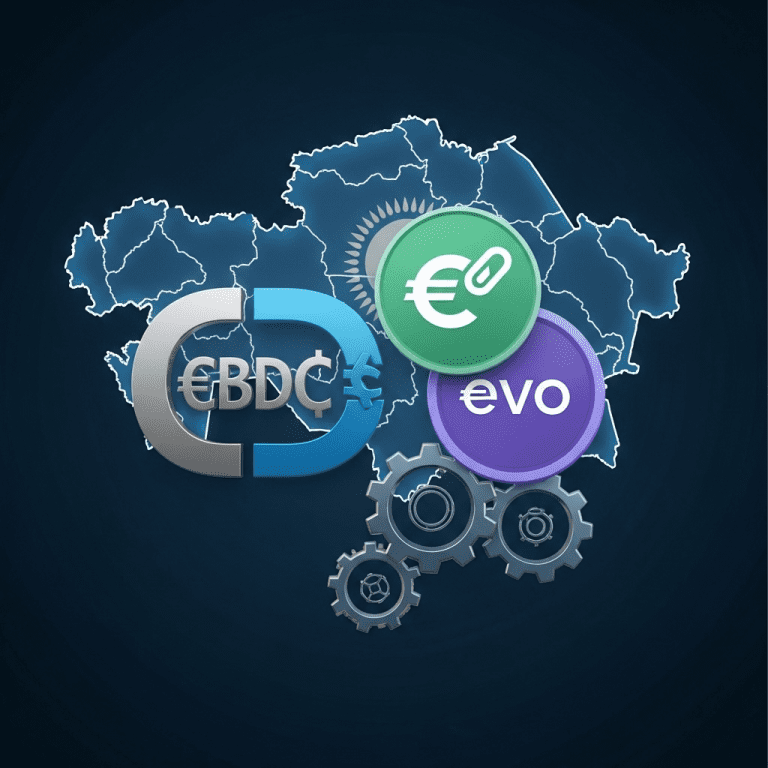The evolving landscape of digital currencies is attracting global attention, especially as Kazakhstan makes headlines with its recent statement: CBDCs vs stablecoins: Kazakhstan says Evo not a rival to digital tenge. As governments and fintech innovators race to set the digital finance agenda for 2025, understanding the roles and differences between central bank digital currencies (CBDCs) and stablecoins is more essential than ever.
CBDCs vs Stablecoins: Kazakhstan Says Evo Not a Rival to Digital Tenge
At the heart of Kazakhstan’s digital currency strategy lies a clear distinction between the country’s official digital currency, the digital tenge, and third-party stablecoins like Evo. While both aim to facilitate seamless digital transactions, officials have stated that Evo, a popular stablecoin designed for cross-border payments, is ‘not a competitor’ to the digital tenge. This official stance signals Kazakhstan’s commitment to positioning the digital tenge as the backbone of the national financial infrastructure while still supporting innovation in the broader crypto ecosystem.
Understanding CBDCs and Stablecoins: Core Differences
What Is a CBDC?
A Central Bank Digital Currency (CBDC) is a sovereign digital currency issued by a nation’s central bank. In Kazakhstan, this is the digital tenge, an electronic form of the country’s existing fiat currency. CBDCs carry full governmental backing, are tightly regulated, and are primarily intended to modernize payment systems, promote financial inclusion, and enhance transparency.
What Is a Stablecoin?
Stablecoins, by contrast, are digital assets typically pegged to the value of fiat currencies or other assets. They are issued by private companies or decentralized protocols and hold appeal for their efficiency and potential for borderless, real-time payments. Notable examples include USDT, USDC, and Evo, the latter of which has strong adoption in Eurasian payment corridors.
Kazakhstan’s Vision: Strengthening the Digital Tenge
The National Bank of Kazakhstan prioritizes trust and regulatory oversight with its digital tenge. By classifying the digital tenge as a CBDC, Kazakhstan ensures strict monetary policy controls while offering citizens a secure, traceable digital payment tool.
Officials reiterate that while stablecoins like Evo can coexist in the wider digital economy, their objectives differ from those of the digital tenge. Evo and similar stablecoins are mostly aimed at expediting international settlements and providing seamless conversion between assets—key benefits for businesses operating across borders. However, the digital tenge’s main use case is domestic: acting as legal tender, supporting retail payments, and ensuring monetary sovereignty within Kazakhstan. For a deeper dive into digital finance strategies, explore resources on crypto investments.
Why Evo Is Not Considered a Rival
Evo’s unique offering as a borderless digital currency gives Kazakhstani citizens a new tool for cross-border transactions, especially where traditional remittances may be costly or slow. However, because the digital tenge is backed by the state, it retains the privileges and responsibilities of fiat currency while Evo—like most stablecoins—operates within the frameworks set by private organizations or decentralized networks.
The digital tenge’s robust regulatory architecture means it can be fully trusted for everyday domestic commerce, wage payments, taxation, and government disbursements. This level of integration and reliability is not mirrored by stablecoins, whose legal status and risk profiles can rapidly shift. As such, Evo complements rather than competes with the state-backed CBDC. For more on stablecoin regulations and risks, reputable industry insights can be found on platforms like investor education portals.
The Strategic Future of Digital Finance in Kazakhstan
A Multi-Currency Ecosystem
Kazakhstan is taking a pragmatic approach by enabling both public and private digital assets to play defined roles. Policies foster innovation while protecting the sovereignty and stability of the national financial system. In the future, this may mean seamless interoperability between the digital tenge and regulated stablecoins, especially for Kazakhstan’s globally active businesses and remittance users.
Challenges and Opportunities
Among the challenges are standardizing regulatory frameworks, ensuring cybersecurity, and educating both the public and businesses on the use of digital currencies. However, by differentiating CBDCs and stablecoins, Kazakhstan is cultivating trust in its own digital currency while creating space for market-driven innovations in international payments. Readers interested in the global evolution of digital currencies can visit international cryptocurrency news platforms.
Conclusion: Coexistence Is Key
The debate surrounding CBDCs vs stablecoins: Kazakhstan says Evo not a rival to digital tenge spotlights the importance of clearly defining the functions and goals of different types of digital currencies. Kazakhstan’s forward-looking stance sets a model for emerging markets: CBDCs can form the foundation of a secure digital economy, while well-regulated stablecoins continue to offer flexibility and speed in cross-border finance. In 2025 and beyond, coexistence—not rivalry—will likely define the success of digital assets in Kazakhstan’s financial landscape.









